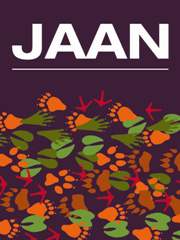Article contents
Preliminary investigation of the influence of long-term dietary isoflavone intake on reproductive tract histology and sex steroid receptor expression in female domestic cats (Felis catus)
Published online by Cambridge University Press: 16 August 2013
Summary
Genistein and daidzein are isoflavones which are reported to influence the reproductive system in a variety of mammalian species. This pilot study aimed to determine if dietary isoflavones could potentially influence reproductive tract histology or morphology in domestic cats, when consumed during the postnatal development period. Cats were maintained on either treatment (150 µg/g DM genistein and 150 µg/g DM daidzein, n = 4) or control (isoflavone free, n = 8) diets from weaning, up to 414 (±17.2) days post-weaning. Reproductive tissues were collected during routine ovario-hysterectomy and examined for histology and sex steroid receptor expression. Findings indicate that these dietary isoflavones influenced the expression of oestrogen receptor α (ERα) and oestrogen receptor β (ERβ), and progesterone receptor in feline reproductive tissues. One cat in the treatment group developed suppurative endometritis, but no evidence of uterotrophic or histological changes were found in any other cats. The potential to alter expression of hormone receptors in the reproductive tract of domestic cats exposed to genistein and daidzein warrants further investigation.
- Type
- Pilot Study
- Information
- Copyright
- Copyright © Cambridge University Press and Journal of Applied Animal Nutrition Ltd. 2013
References
- 1
- Cited by


